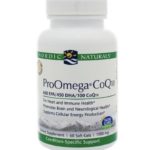Herb Vs. Spices
The difference between the two is where they are obtained from a plant.
Herbs come from the leafy and green part of the plant.
Spices are parts of the plant other than the leafy bit such as the root, stem, bulb, bark or seeds.

We often hear the term “herbs and spices”. As any amateur chef knows, herbs and spices are vital ingredients in many dishes. They add flavor, aroma, color, texture and even nutrients.
Both spices and herbs are parts of plants (fresh or dried) that are used to enhance the flavor of foods. They’ve also been known to preserve foods, cure illness and enhance cosmetics.
Herbs are usually grown in more temperate areas than spices and have great medicinal value and are also used in the preparation of cosmetic products.
Spices are usually dried before being used to season foods. Unlike herbs, they are grown in more tropical countries. They’ve also been known to preserve foods and some have medicinal value, such as turmeric with its anti-inflammatory, anti-fungal properties.
Despite the above clarification, according to the American Spice Trade Association, spices are defined as “any dried plant product used primarily for seasoning purposes”. This really broadens the definition of spices, allowing it to include herbs, dehydrated veggies, spice blends and spice seeds.
Here are a few example of herbs and spices, along with their reported nutritional/health benefits.
Spice Nutrition
Cinnamon
Lowers blood sugar levels, LDL (bad) cholesterol and triglycerides especially in people with type 2 diabetes
Ginger
Can stop nausea and may also relieve heartburn
Cloves
Have antibacterial, antiviral, antifungal and antiseptic properties; they are known for relieving flatulence and can actually help promote good digestion as well as metabolism
Chili
Contains capsaicin which puts the heat in chilies, may lower the risk of skin and colon cancers, shown to suppress appetite and boost metabolism
Mustard seeds
Contain phytonutrient compounds that protect against cancers of the gastrointestinal tract; believed to reduce the severity of asthma
Herb Nutrition
Basil
Rich in Vitamin A and K. Assists with combatting bowel inflammation and rheumatoid arthritis
Oregano
Assists with inflammation
Mint
Helps with digestion and asthma
Parsley
Protects against rheumatoid arthritis, antioxidant-rich, fights cancer, high in vitamin C and iron.
Thyme
Contains the oil, thymol, especially helpful for chest and respiratory problems, also acts as an antiseptic and disinfectant.


